Social Issues in Charlie Chaplin's 'Modern Times'
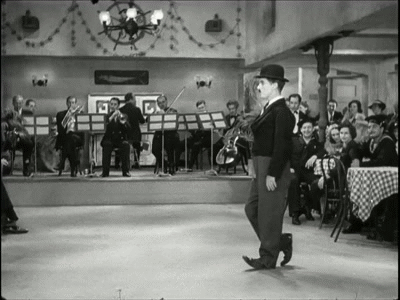
Social Issues in Charlie Chaplin's 'Modern Times'
No human being is more responsible for cinema's ascendance as the dominant form of art and entertainment in the twentieth century than Charlie Chaplin. Modern Times marked the last screen appearance of the Little Tramp- the character which had brought Charlie Chaplin world fame, and who continues to be the most universally recognised fictional image of a human being in the history of art. The film is considered Chaplin's self-conscious valedictory to the pantomime of silent film he had pioneered and nurtured into.
He garnered inspiration for the 'Modern Times' during his world tour in 1931-1932 to promote City Lights. During his tour, Charlie associated with his fans and took notice of the mass suffering due to the effects of Great Depression.He gained sympathy for the public as he had been in their position while undergoing an impoverished past. A revolutionary phenomenon that was supposed to reinvent lives and the economy was creating social upheaval.
Chaplin was greatly distressed by the economic and social conditions in Europe and met famous world leaders like Mahatma Gandhi and Albert Einstein to discuss the plight of the machine-age and its workers. The effects of his trip combined with the state of America upon his return were some of the reasons that Chaplin strayed from his traditional comedic material and made him more socially conscious artistically. The film can be read as a social commentary focusing on the idea of comedy and laughter to depict the adverse effects of a mechanised future, the hardships of industrialised future due to Great Depression, and how consumerism is instrumental in understanding social control.It criticises the flourishing industrialisation and commoditisation of big-business America, which developed at the expense of its workers.



.

Charlie Chaplin's satirisation of the automatisation of the American Society in the early 20th Century is achieved through physical humour, which serves as a subtle yet effective portrayal of a common fear of the era. Charlie is able to engage the audience with humour to address the uncertainty and uncanniness of an industrialised future because it adds to the effect of satirising this fear- a technique which is used to make our problems more approachable. The film utilises humour based on extreme exaggeration, satire and slapstick to highlight negative aspects of the blurring line between man and machine in a rapidly progressing society.
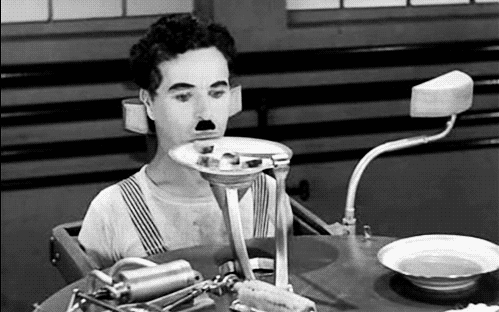
The "Modern Times" declares itself as "a story of industry, of individual enterprise-humanity crusading in the pursuit of happiness." However as the cinema unfolds we are confronted with the idea that the film upholds how 'individual enterprise' is taken over by a bureaucratic industrial spirit that culminates in the act of questioning of what constitutes a secured or happy future.
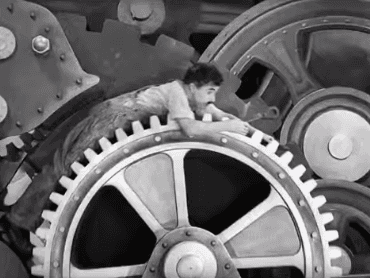
The film is evoked into comedy that embraces difficult subjects such as strikes, riots, unemployment, poverty and the tyranny of automation. Through its universal themes and comic inventiveness, the film emerges as one of Charlie Chaplin's greatest and most enduring works. Chaplin who was really attentive to the economic and social problems, claimed in 1931: The purpose of machines should be on the well-being of humanity, instead of causing tragedy and unemployment. In this movie, comedy, a positive form is used to present harmful content which requires a deep understanding of tragedy and mastery over comedy and the ability to utilise comedy to showcase tragedy. Moreover, to keep the audience riveted to the screen and capture their attention was again a huge challenge. Charlie Chaplin has been able to accomplish this challenging task exceptionally.

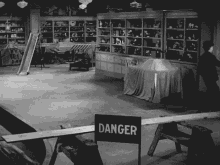
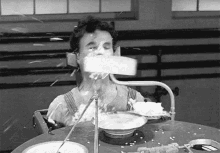
Throughout the movie, Chaplin presents a contrasting picture of the devastating effects of industrialisation on human beings. The brutal nature of the work at the factory leads Chaplin to suffer from a breakdown and being sent to an asylum. Soon after his recovery and release from the hospital, he is arrested mistakenly and sent to jail. Hence, his presence at mental asylum and prison is the direct consequence of working at the factory. He suggests that authority takes advantage of the working class and prioritises efficiency over humanity. Furthermore, it is important to recognise the context of the time period while watching the movie. It is set up in 1936 when the Americans were dealing with the Great Depression and the effects of the country's longest and worst economic downturn. The main characters working at the factory used to steal in order to survive followed by frequently occurring strikes.

Chaplin shows how employment and capitalism value practicality over individuality of the workers, stripping employees of any autonomy or personality. Corporation as well as companies own the workers, and multiple shots suggest that work eats its workers, abusing and using them until they are exhausted or driven mad. These messages appear to be very dark and disheartening, but that is not how Chaplin ended the movie. Despite any statements he wanted to make about class differences or working conditions, the movie finishes with hope. The utilisation of music sets the mood wherein the Trump character decides that no matter how bad his life is, he can still be happy because of the love he has for the people around him.

References




Comments
Post a Comment